Attracting Beneficial Insects Using
Plant Selection and Spacing
Attracting beneficial insects is a matter of enhancing insect habitat, but only after you stop using poisons. When you use pesticides and herbicides to control pests or weeds, the first thing you wipe out are parasitic wasps, predators, and other Beneficial Garden Insects that are essential to natural garden pest control.
|
© Steve Masley…Click IMAGE to Enlarge |
Garden pests evolve resistance to chemicals used to control them. Their natural enemies don’t get their level of exposure and don’t develop this resistance.
When you stop using chemicals to control insect pests, a virtuous cycle begins. Pest species increase, but so do their natural enemies. Garden pests are the food of Predatory Insects, and the incubators of Parasitic Wasps.
Adult parasitoid wasps need nectar sources in the form of abundant, tiny flowers. Flowers whose nectaries are too small for honeybees to exploit.
This is not to take anything away from our workhorse pollinators, European honeybees, which are suffering tremendously these days—but they are very efficient, and will outcompete native bees and parasitoids on all but the tiniest flowers. Smart gardeners provide nectar sources for both.
Gardeners control plant selection, plant placement, plant spacing, and timing of planting—and therefore, timing of bloom. Each of these variables can be manipulated as a means of attracting beneficial insects.
The best strategy for attracting beneficial insects is a two-pronged approach:
like cilantro, dill, and short-season Asian greens within vegetable beds
Selective Bolting
|
BIRB’s: Beneficial Insect Reservoir Beds
Attracting:
Pollinators
|
Parasitoid Wasps
|
Predators
Beneficials and Container Gardens
Plants for Attracting Beneficial Insects
Selective Bolting
|
© Steve Masley…Click IMAGE to Enlarge |
Gardeners generally work hard to suppress “bolting” in vegetables—when vegetables flower and set seed—and flowering in herbs.
Flowering and setting seed signal the end of leaf production, and if you’re growing vegetables for their leaves or succulent stalks, once flower formation begins, it’s time to harvest.
HOWEVER, flowers are critical nectar sources for pollinators and parasitic wasps, and the upright, stalky structure of flowering plants provides ideal habitat for insect predators.
A common organic gardening practice is to interplant short-term Asian greens (like tatsoi, pak choi, or mizuna) between broccoli or cauliflower plants. The short-term brassicas fill in the gaps between the main crop plants, forming a protective canopy that shields the soil from driving rain or the drying effects of the sun.
They mature in 6-8 weeks, and after they’re harvested, the main crop plants fill out and take over the bed. But allowing a few of them to flower provides a nectar source for honeybees and other pollinators, and bolting brassicas release chemical signals that draw parasitoid wasps, syrphid flies, and ladybugs right into the foliage of your main crop plants, where they scour the leaves for insect pests.
You can also interplant cilantro or dill, and allow a few plants to flower, to achieve the same purpose.
Top of Page
|
Selective Bolting
|
BIRB’s
Attracting:
Pollinators
|
Parasitic Wasps
|
Predators
Beneficials and Container Gardening
|
Plants for Beneficials
BIRB’s: Beneficial Insect Reservoir Beds
|
© Steve Masley…Click IMAGE to Enlarge |
Beneficial Insect Reservoir Beds (BIRB’s) are designated border areas—and “islands” within the vegetable beds—where insect diversity is encouraged.
Attracting beneficial insects—and sustaining them—is their purpose, but they can be beautiful as well as functional.
The spatial arrangement of plants is as Important as the types of plants
Plan for one large border beneficial insect reserve along one side of the garden, with a medium-sized reserve on the opposite side of the garden, and smaller plantings scattered in and around the crops in the middle.
This habitat is good for attracting beneficial insects to move from one side of the garden to the other, passing through the vegetable plants in the middle in order to reach nectar sources on the other side of the garden.
The reserves provide nectar and pollen sources for pollinators and parasitoid wasps, and shelter from extremes of temperature, wind, and precipitation.
Cooler habitat is critical during summer. Parasitoid wasps may live only 10 days in high temperatures, but can live up to 6 weeks if they have cooler areas to shelter in. Temperatures in the middle of a well-designed BIRB can be 10-20° cooler than ambient temperatures.
Plantings within the crop beds and along the borders of paths encourage beneficial insects to move into the crop zone.
If you don’t have the space for dedicated BIRBs in the middle of the garden, pots or flats of tiny-flowered plants can be moved to beds where infestations occur.
Diversity is the Key
Choose plants from different families, and plants of different heights, shapes and sizes, with a variety of foliar and flower types.
|
for Parasitic Wasps—Ammi major(Bishop’s Lace) © Steve Masley…Click IMAGE to Enlarge |
Humans like large, showy flowers and uniform, orderly plant heights. Nature is a jumble of sizes, shapes and colors in time and space. Plant for the insect eye, not just the human eye.
The “ideal” BIRB contains shrubby, structural plants like perennial herbs or Mexican sunflowers, with more delicate plants—Bishop’s Lace, cilantro, or dill, for example—threading their way through the stalks.
This forms a protective lattice of stems, flowers, and foliage that offers food and shelter at multiple levels throughout the canopy.
Be sure to include the following types of plants:
Plants with tiny flowers, which are ideal for attracting and sustaining parasitic wasps.
Plants with lacy foliage, like achillea, cosmos, dill, and fennel. Lacy foliage attracts predators like green lacewings and ladybugs.
Perennial and annual herbs, for European honeybees and other pollinators.
Flowering native plants, which are the preferred nectar sources for bumblebees and native bees. See Come Hither, Bumblebee, and Pollinate for more information.
for more information.
Bunch grasses, whose roots feed and shelter the larvae of ground beetles, which are voracious predators of snails, slugs, cutworms, and other ground-based garden pests.
Top of Page
|
Selective Bolting
|
BIRB’s
Attracting:
Pollinators
|
Parasitic Wasps
|
Predators
Beneficials and Container Gardening
|
Plants for Beneficials
Attracting Pollinators
The most important thing a gardener can do to attract, sustain, and build up populations of pollinators is to provide diverse nectar sources. A lack of diversity in nectar sources is one factor implicated in Colony Collapse Disorder (CCD), a syndrome that’s devastating European honeybee hives across the country.
Flowering herbs like rosemary and lavender are excellent nectar sources for pollinators. And even though you may lose some leaf production, if you’re serious about attracting beneficial insects, allow some basil, oregano, and thyme to flower.
Orchard mason bees, bumblebees, and native bees tend to prefer nectar from native plants in your area. The Xerces Society Pollinator Resource Center is a great resource for regional pollinator conservation efforts. Organic Farming for Bees and Farming for Bees provide detailed information on enhancing habitat for both honeybees and native pollinators.
is a great resource for regional pollinator conservation efforts. Organic Farming for Bees and Farming for Bees provide detailed information on enhancing habitat for both honeybees and native pollinators.
Go to Beneficial Garden Insects: Pollinators
Attracting Parasitic Wasps
To increase populations of parasitic hymenoptera:
Have abundant, tiny flowers in bloom at all times, for the longest possible season. Tiny flowers provide nectar sources that only these insects can exploit.
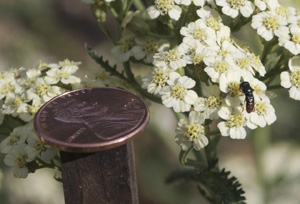
|
|
© Steve Masley…Click IMAGE to Enlarge |
Provide sheltered habitat to protect parasitoids from the extremes of summer heat and winter cold.
Plants like allysum, yarrow (achillea), and Bishop’s lace are ideal beneficial plants. Allow coriander, dill, and short-term interplanted brassicas to bolt. The nectaries of these flowers are too small for larger pollinators like honeybees to exploit, so they become the designated nectar source for parasitoid wasps.
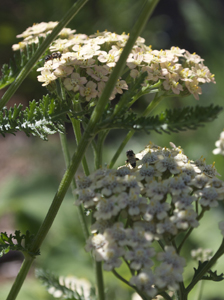
|
|
© Steve Masley…Click IMAGE to Enlarge |
Late-Season Nectar Sources (such as goldenrod and yarrow) encourage development of large, robust females, which are more capable of overwintering. Large females that emerge early from diapause can attack the first wave of pest insects, dampening populations for the whole summer.
Some weeds (such as shepherd’s purse) are useful as early-season nectar sources for the first wave of parasitic wasps emerging from winter diapause. If you pay attention, you can use early-season weeds for attracting beneficial insects. Just make sure you yank them before the bulk of the seeds mature and drop.
For a less risky Early-Season Nectar Source, plant coriander, dill, and short-term brassicas in crowded pots; they will bolt quickly, providing an early-season mobile nectar source that can be moved where it’s needed most in the garden.
Go to Beneficial Garden Insects: Parasitoids
Top of Page
|
Selective Bolting
|
BIRB’s
Attracting:
Pollinators
|
Parasitic Wasps
|
Predators
Beneficials and Container Gardening
|
Plants for Beneficials
Attracting Predators
|
Click IMAGE to Enlarge |
Plant structure is a key factor in attracting beneficial insects like garden predators.
Lacy Foliage protects insect predators from extremes of wind and heat, while shielding them from larger predators like birds.
Diverse Plant Heights attract and build up populations of spiders, which need the variation in height for optimal web placement.
Go to Beneficial Garden Insects: Predators
Attracting Beneficial Insects to
Container Gardens
|
© Steve MasleyClick IMAGE to Enlarge |
The basic principles of attracting beneficial insects—diverse plants, abundant, tiny flowers, and the spatial arrangement of plants—apply to balcony farms, container gardens, and small space gardens, as well as suburban gardens and farms.
Even though I have a plot at a community farm, I grow my salads in window boxes and salad tables on my deck. I found a great Asian green that I really like, so I allowed it to bolt in order to save seeds. When the plant started flowering, I noticed a few aphids on the stems between the flowers, and on the undersides of the bottom leaves.
There weren’t that many, but in a couple days I started seeing brown aphid mummies, and parasitoid wasps flitting around like dust motes, looking for more. The next day, I had ladybugs and a leatherback beetle digging into the crevices to find the last of the aphids. Scrawny ladybug larvae now search for stragglers.
|
(Note Aphid Skeleton on Left) © Steve Masley …Click IMAGE to Enlarge |
Plant patches of small-flowering plants in window boxes, or place a couple pots of them along the outside edge of the balcony, where beneficial insects can detect them. Place another pot or two of the same plants in among your potted vegetables on the deck.
Place plant pots on a shallow bed of gravel. When you water, excess water drains into the gravel, providing an “insect oasis” of easily-accessible water for insects.
Allow some brassica plants (tatsoi, pak choi, kale, etc.) to bolt. Bolting brassicas are great for attracting beneficial insects. They release chemical signals that draw parasitoid wasps, syrphid flies, ladybugs, and other beneficials to your container garden.
Top of Page
|
Selective Bolting
|
BIRB’s
Attracting:
Pollinators
|
Parasitic Wasps
|
Predators
Beneficials and Container Gardening
|
Plants for Beneficials
Plants for Attracting Beneficial InsectsClick IMAGE to Enlarge |
|
| Umbellifers, like Dill, Fennel, and Ammi major (Bishop’s Lace), are among the best plants for attracting beneficial insects. Their stiff stalks and lacy, feathery foliage create pockets of still air and cooler temperatures that can extend the lifespan of beneficial garden insects, and their abundant, tiny flowers are important nectar sources for parasitic wasps. Interplanting dill with broccoli, cabbage, or cauliflower and allowing it to flower will draw parasitoid wasps into the foliage of your crops, where they seek and destroy aphids, caterpillar eggs, and caterpillars. Ammi (Bishop’s Lace) is a non-invasive relative of Queen Anne’s Lace that works well in a border or interplanted among vegetables. If they’re grown in the shade of other plants, umbellifers flop over, and their branches thread their way up through the foliage overhead. Umbellifers are great plants for forming the lattice structure that protects, shelters, and feeds populations of beneficial insects. |
|
| Achillea millefolium, (Yarrow) For attracting beneficial insects, especially parasitic wasps, Achillea is the only plant to rival umbellifers. Achillea has feathery foliage that attracts ladybugs and other garden predators, and it’s also a drought-tolerant perennial that only needs to be cut back once a year. Probably the best all-around plant for attracting beneficial insects to the summer garden. ‘Summer Pastels’ has beautiful shades of pale yellow, salmon, and pink, and is a great addition to any perennial border. |
|
| Salvias, like ‘Marble Arch’, have something for the human eye as well as the insect eye. Salvias have colorful bracts that are beautiful in a border, or interplanted among chilies, and tiny flowers that feed native bees and parasitic wasps. ‘Marble Arch’ grows well in vegetable beds that get regular water, but can also survive in perennial borders that get less water. Common Garden Sage is one among many salvia varieties that are useful in the kitchen and for building up populations of beneficial insects. |
|
| Creeping Thyme, Wooley Thyme,and other thyme cultivars provide nectar sources for European honeybees, native pollinators, and parasitoid wasps. Often grown as ground covers that can take some foot traffic, they’re great planted between steppingstones or along the edges of paths. |
|
| Mexican Sunflower (Tithonia) is a good structural plant for BIRBs. It forms a 3-4’ herbacious shrub with an open, branching structure, that attracts beneficial insects like spiders. In full bloom, tithonia sports dozens of reddish-orange palm-sized flowers that attract pollinators like honey bees, native bees, and butterflies. Plant umbellifers like Ammi (Bishop’s Lace), between Mexican sunflowers. The umbellifers will intertwine with the branched tithonias, creating the ideal lattice structure characteristic of good BIRBs. |
|
| Catmint is another good plant for attracting beneficial insects. A relative of catnip, it also attract cats, but they’ll have to fight with the honeybees to munch it. |
|
| Flowering Herbs Herb flowers are great nectar sources for attracting beneficial insects. Flowering basil, oregano, coriander, thyme, and rosemary are always swarming with bees. If you’re growing herbs for fresh use or drying, it’s usually best to harvest the leaves just before the flowers open, but it’s a good idea to leave a few branches—or a couple of whole plants—to feed populations of beneficial insects. |
|
Top of Page
|
Selective Bolting
|
BIRB’s
Attracting:
Pollinators
|
Parasitic Wasps
|
Predators
Beneficials and Container Gardening
Plants for Beneficials
Natural Garden Pest Control | Beneficial Garden Insects
Copyright © 2009-2020, by Steve Masley, Grow-it-Organically.com
All rights reserved
HOME | About Us | Contact Us | Privacy
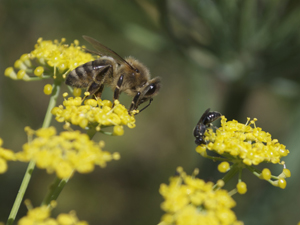

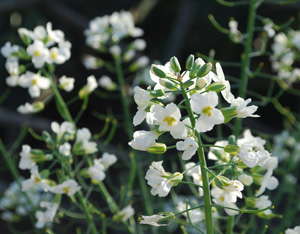
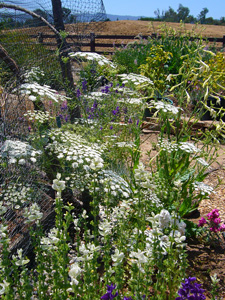
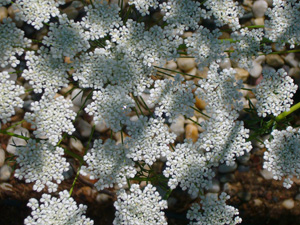
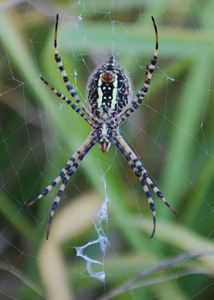
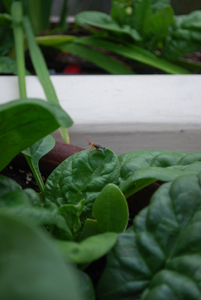
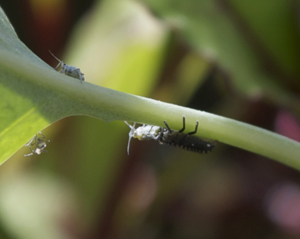
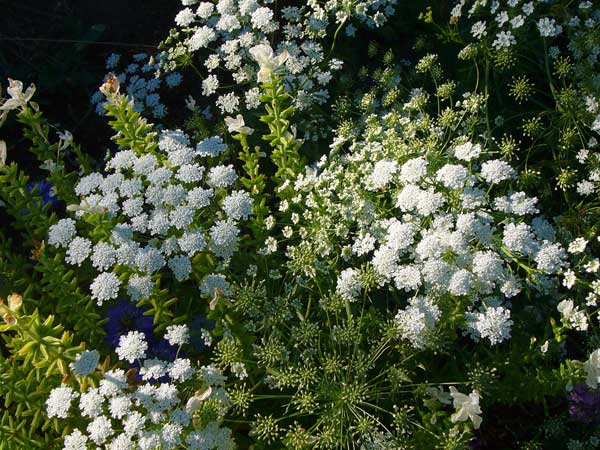
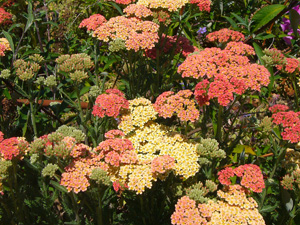
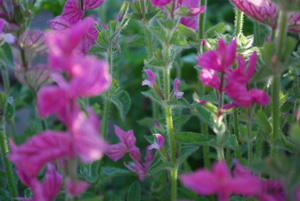
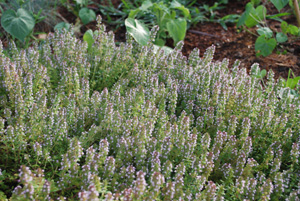
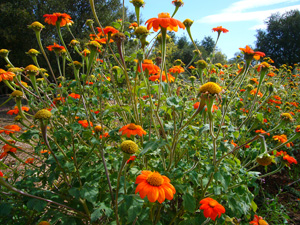
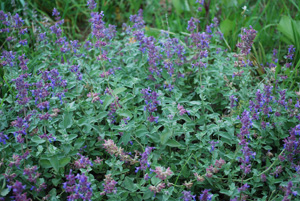
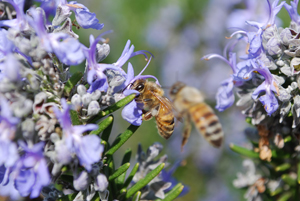
New! Comments
Have a question or comment about what you just read? Leave me a comment in the box below.